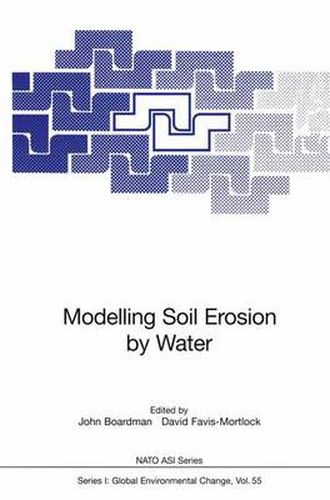Readings Newsletter
Become a Readings Member to make your shopping experience even easier.
Sign in or sign up for free!
You’re not far away from qualifying for FREE standard shipping within Australia
You’ve qualified for FREE standard shipping within Australia
The cart is loading…






This title is printed to order. This book may have been self-published. If so, we cannot guarantee the quality of the content. In the main most books will have gone through the editing process however some may not. We therefore suggest that you be aware of this before ordering this book. If in doubt check either the author or publisher’s details as we are unable to accept any returns unless they are faulty. Please contact us if you have any questions.
TO THE MODEL EVALUATION 1. MODELLING SOIL EROSION BY WATER l 2 John Boardman and David Favis-Mortlock 1 School of Geography and Environmental Change Unit Mansfield Road University of Oxford Oxford OX1 3TB UK 2 Environmental Change Unit University of Oxford 5 South Parks Road Oxford OX1 3UB UK Introduction This volume is the Proceedings of the NATO Advanced Research Workshop ‘Global Change: Modelling Soil Erosion by Water’, which was held on II-14th September 1995, at the University of Oxford, UK. The meeting was also one of a series organised by the IGBP 1 GCTE Soil Erosion Network, which is a component of GCTE’s Land Degradation Task (3.3.2) (Ingram et aI., 1996; Valentin, this volume). One aim of the GCTE Soil Erosion Network is to evaluate the suitability of existing soil erosion models for predicting the possible impacts of global change upon soil erosion. Due to the wide range of erosion models currently, in use or under development, it was decided to evaluate models in the following sequence Favis-Mortlock et al., 1996): * field-scale water erosion models * catchmenr-scale water erosion models * wind erosion models * models with a landscape-scale and larger focus. As part of this strategy, the first stage of the GCTE validation of field-scale erosion models was carried out at the Oxford NATO-ARW. I A list of Acronyms fonns Appendix A.
$9.00 standard shipping within Australia
FREE standard shipping within Australia for orders over $100.00
Express & International shipping calculated at checkout
This title is printed to order. This book may have been self-published. If so, we cannot guarantee the quality of the content. In the main most books will have gone through the editing process however some may not. We therefore suggest that you be aware of this before ordering this book. If in doubt check either the author or publisher’s details as we are unable to accept any returns unless they are faulty. Please contact us if you have any questions.
TO THE MODEL EVALUATION 1. MODELLING SOIL EROSION BY WATER l 2 John Boardman and David Favis-Mortlock 1 School of Geography and Environmental Change Unit Mansfield Road University of Oxford Oxford OX1 3TB UK 2 Environmental Change Unit University of Oxford 5 South Parks Road Oxford OX1 3UB UK Introduction This volume is the Proceedings of the NATO Advanced Research Workshop ‘Global Change: Modelling Soil Erosion by Water’, which was held on II-14th September 1995, at the University of Oxford, UK. The meeting was also one of a series organised by the IGBP 1 GCTE Soil Erosion Network, which is a component of GCTE’s Land Degradation Task (3.3.2) (Ingram et aI., 1996; Valentin, this volume). One aim of the GCTE Soil Erosion Network is to evaluate the suitability of existing soil erosion models for predicting the possible impacts of global change upon soil erosion. Due to the wide range of erosion models currently, in use or under development, it was decided to evaluate models in the following sequence Favis-Mortlock et al., 1996): * field-scale water erosion models * catchmenr-scale water erosion models * wind erosion models * models with a landscape-scale and larger focus. As part of this strategy, the first stage of the GCTE validation of field-scale erosion models was carried out at the Oxford NATO-ARW. I A list of Acronyms fonns Appendix A.